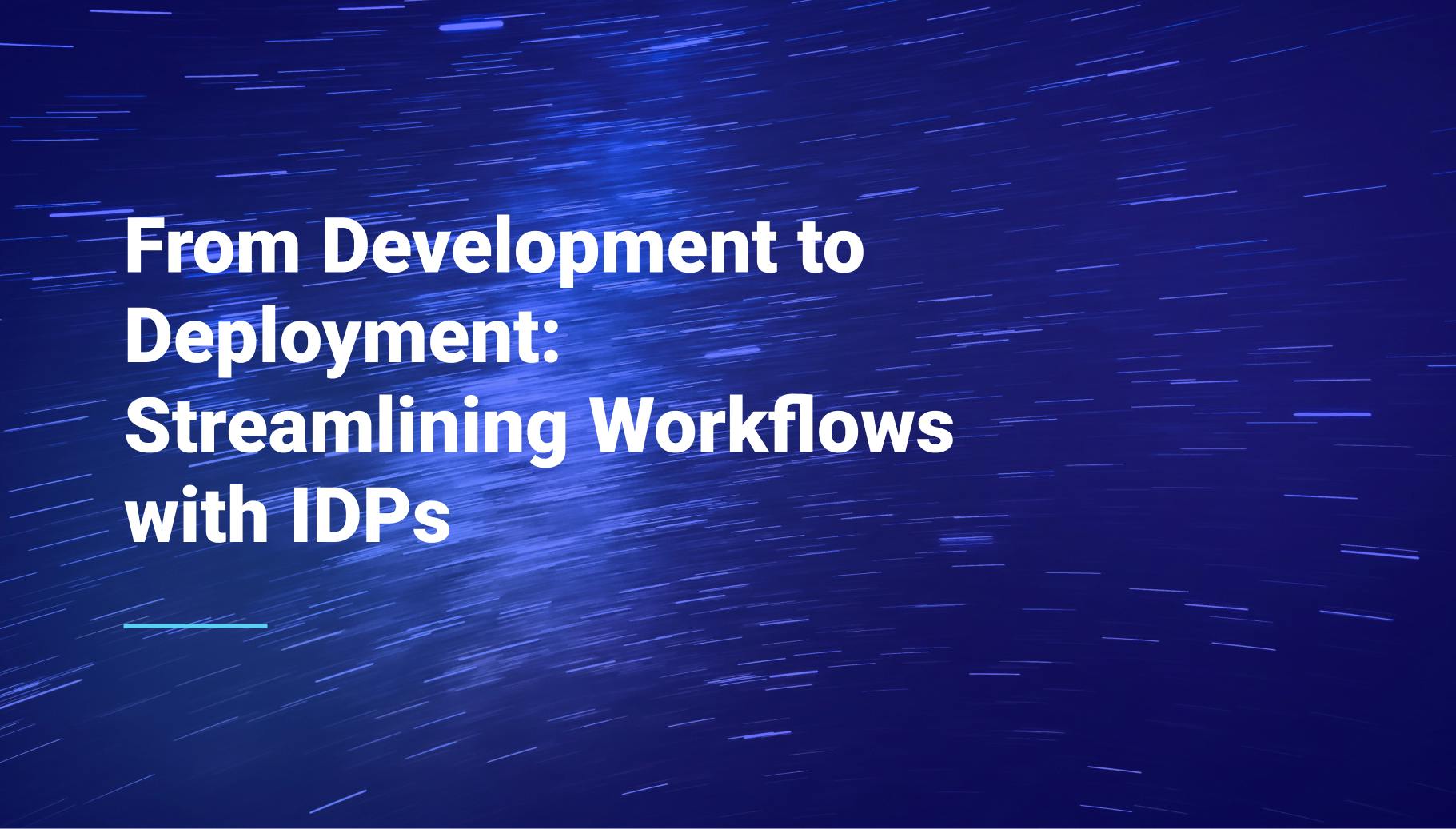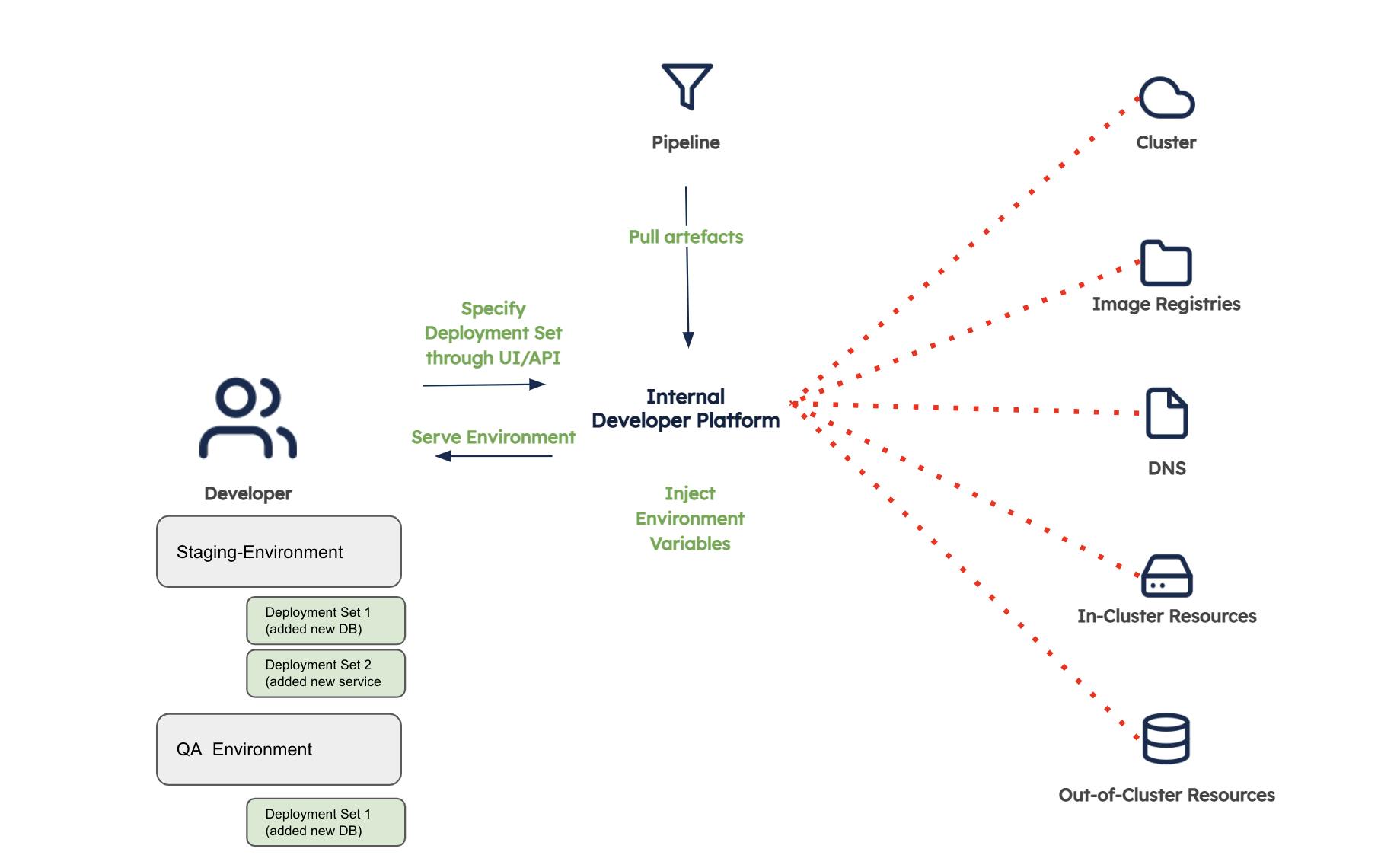From Development to Deployment: Streamlining Workflows with Internal Developer Platforms
Ever wondered how software development teams can efficiently tackle the complexities of modern development challenges? The answer lies in the Internal Developer Platforms (IDPs), a powerhouse of tools and capabilities for development and deployment. These platforms provide a comprehensive ecosystem for development and deployment, integrating key functionalities such as version control, CI/CD pipelines, container orchestration, and automated testing. In this article, we will discuss the challenges faced by traditional software development workflow. We will then walk through how the IDPs revolutionize this workflow by using the above-mentioned techniques.

Morgan Perry
October 22, 2023 · 5 min read
Let's start with the core understanding of IDP and its major features.
#Understanding the Internal Developer Platform (IDP)
An Internal Developer Platform (IDP) is a comprehensive ecosystem that provides developers with the necessary tools and resources to streamline their development and deployment workflows. It serves as a bridge between developers and the infrastructure, enabling teams to build, test, and deploy applications more efficiently.
#Key Functionalities of IDPs
- Version Control: IDPs integrate with version control systems, allowing developers to manage changes to their codebase effectively.
- CI/CD Pipelines: Continuous Integration/Continuous Deployment pipelines automate the process of testing and deploying code, reducing manual effort and increasing speed.
- Container Orchestration: IDPs often include container orchestration tools, which manage the deployment, scaling, and networking of containers.
- Automated Testing: Automated testing tools within IDPs enable developers to validate their code's functionality quickly and reliably.
By leveraging these functionalities, Internal Developer Platforms (IDPs) can significantly enhance the productivity of development teams, streamline workflows, and accelerate the deployment of applications. They provide a robust platform for managing the complexities of modern software engineering, making them an invaluable resource for any development team.
#Evolution of Software Development Workflow
#Traditional Software Development Workflow and Its Challenges
In traditional software development, developers often work in isolation, focusing on specific aspects of an application. This can lead to inefficiencies and miscommunications. For example, a frontend developer might face issues when integrating code with the backend developer. Additionally, setting up and maintaining development environments can be complex and time-consuming. Let’s see how IDPs address these challenges.
#Traditional Software Development Workflow and Its Challenges
In the past, software development followed a more linear approach. Developers worked in silos, often leading to the following challenges:
- Integration Issues: Developers working in isolation meant integrating individual modules became problematic. For example, integrating the frontend and backend often led to inefficiencies, misalignments, and bugs.
- Environment Set-Up: Each developer had their local setup, causing the infamous "it works on my machine" syndrome when code failed to run in different environments.
- Delayed Feedback: Traditional workflows often lacked continuous testing, meaning code errors were detected late in the process, causing costly delays and rework.
- Lack of Collaboration: With no shared tools or platforms, collaborating on code, especially in large teams, became a hassle.
#How IDPs Address These Challenges
Internal Developer Platforms provide solutions tailored to these challenges:
- Integrated Development Flow: IDPs offer a platform that seamlessly combines the processes of building, testing, and deploying. For instance, when a developer pushes a code update, the platform would automatically test and deploy it if successful.
- Environment Consistency: IDPs provide ephemeral environments, ensuring consistency from development to production, thus eliminating environment-related issues.
- Immediate Feedback: Automated testing tools within IDPs ensure that code is validated continuously, speeding up the feedback loop.
- Enhanced Collaboration: IDPs offer shared environments, reducing integration challenges. A team can work concurrently on multiple modules, ensuring seamless integration from the start.
The below image shows how an IDP acts as a unified platform for all the needs of an engineering team:

#IDPs in Action: Enhancing Development and Deployment
#How IDPs Enhance Development and Deployment
- Developer Self-Service Portal: One of the critical features of IDPs is the developer self-service portal. This portal empowers developers by providing them with a user-friendly interface to access tools, resources, and deploy environments without waiting for operational or infrastructural approvals. This drastically reduces setup times and allows developers to focus more on coding and less on configuration.
- Unified Development Lifecycle: IDPs integrate the entire development process into one platform, removing silos for a seamless transition from coding to deployment. This cohesive approach combines coding, testing, and deployment phases, ensuring smooth progression between stages and eliminating potential bottlenecks and inconsistencies.
- Real-time Debugging with Ephemeral Environments: IDPs allow developers to create temporary, production-like environments for testing new features or debugging. These environments can be quickly set up and discarded, ensuring that potential issues are identified and addressed before they reach the production stage.
- Advanced Collaboration Tools: IDPs incorporate enhanced collaboration tools such as Teams, GitHub, Slack, Jenkins, and others. These tools enable synchronous coding, allowing teams to work on various modules of a project concurrently. The effortless merging of their contributions not only mitigates integration issues but also promotes a unified, high-quality final product.
#Real-World Applications of IDPs
- Fintech: A leading digital banking platform trying to seamlessly integrate multiple financial products, turned to an IDP. Through the developer self-service portal, their teams could independently deploy and test new financial tools and integrations. This not only sped up their product release cycle but also ensured a stable platform experience during high transaction periods.
- Healthcare: A digital health service provider faced delays due to lengthy environment setup times. By transitioning to an IDP, their developers could quickly instantiate ephemeral environments for testing. This drastically reduced their application's time-to-market and ensured higher data accuracy in real-time patient systems.
- Gaming: A game development company wanted to roll out updates without compromising user experience. The IDP's real-time debugging capabilities enabled them to test updates in isolation and roll them out smoothly, ensuring players experienced no disruptions.
#Conclusion
In conclusion, Internal Developer Platforms (IDPs) have revolutionized the software development and deployment landscape. By providing a comprehensive ecosystem that integrates key functionalities such as version control, CI/CD pipelines, container orchestration, and automated testing, IDPs have addressed the challenges of traditional workflows. They have streamlined the development lifecycle, enhancing both the development and deployment phases. With their ability to improve code quality, increase developer productivity, ensure reliable deployments, and accelerate release cycles, IDPs have proven to be a game-changer in the field of software engineering. We encourage technical teams to explore the transformative benefits of IDPs and leverage their potential to drive efficiency and innovation in their software development processes.
Your Favorite DevOps Automation Platform
Qovery is a DevOps Automation Platform Helping 200+ Organizations To Ship Faster and Eliminate DevOps Hiring Needs
Try it out now!

Your Favorite DevOps Automation Platform
Qovery is a DevOps Automation Platform Helping 200+ Organizations To Ship Faster and Eliminate DevOps Hiring Needs
Try it out now!


